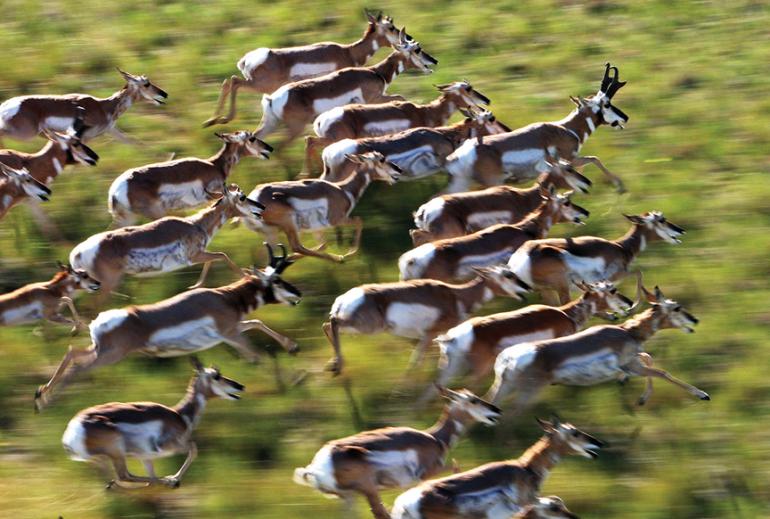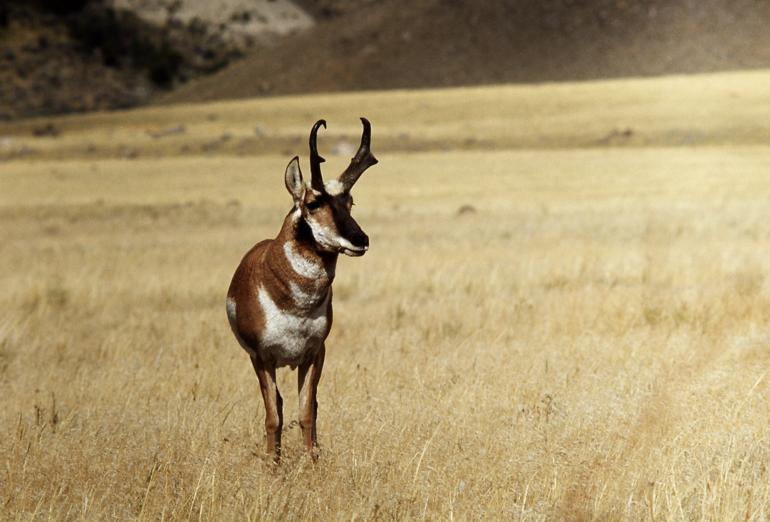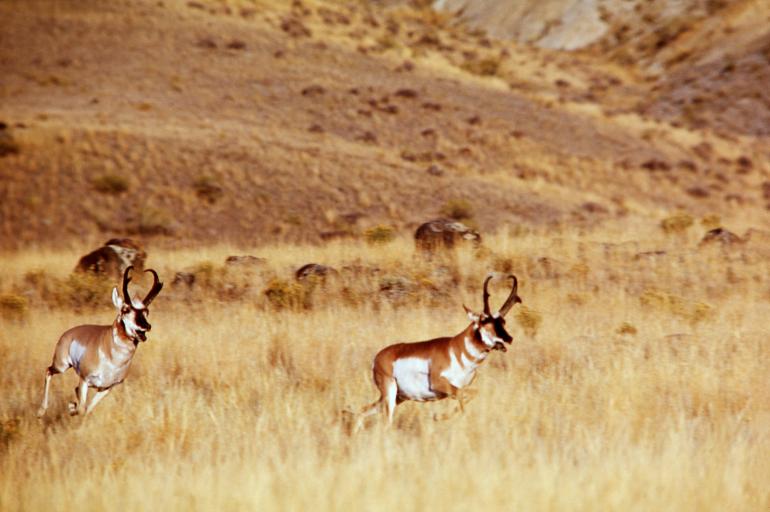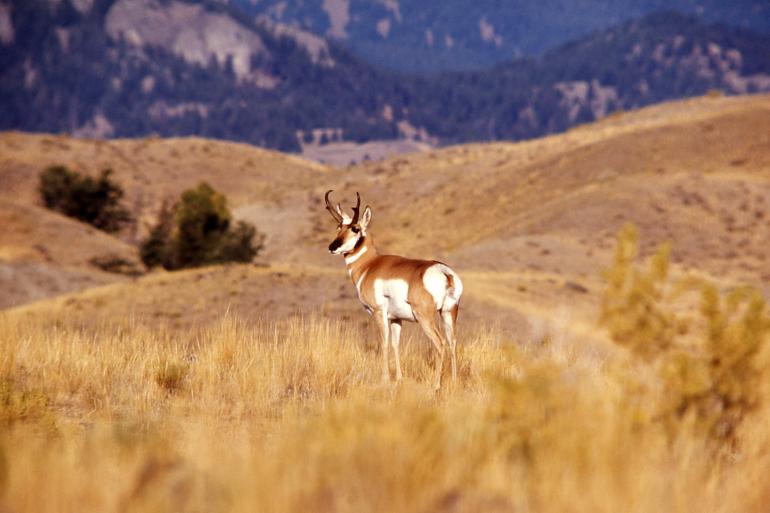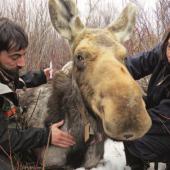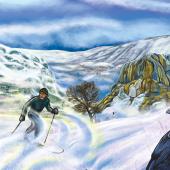Born to Run
The open prairies and hills of southwest Montana are good areas to spot pronghorn antelope, the fastest distance runners in the world. Fans of the cheetah may argue that the African feline is faster, but they’re only correct if the distance is up to a quarter-mile or so. For any distance beyond that, put your money on the pronghorn.
Watching pronghorn easily outpace present-day predators, biologists deduced that the pronghorn’s running ability probably developed in relation to ancient predators that were faster than any currently in existence.
The pronghorn is unable match the African cheetah’s sprint speed of up to 70mph because the big cat’s flexible spine allows more time for its legs to push off the ground. But for distances longer than a sprint, the pronghorn’s aerobic capacity and long, thin legs enable a pace of up to 55mph, faster than the cheetah over a sustained distance, as well as every other existing land animal.
Weighing from 90 to 150 pounds, the light and agile pronghorn—or antelope, as most Montanans refer to it—is most often seen in a band or herd, preferring a sagebrush and grass prairie habitat. Both male and female pronghorn sport the same long, dark eyelashes to shield their eyes from the sun. Their eyes are set high and wide on the sides of their head to watch for danger, and the animal’s exceptional distance vision pairs well with its speed and agility.
These animals not only run fast, they seem to love it. Recently, I spotted two adult pronghorns and two juveniles near the Yellowstone River. Like spectators at an event, the adults watched the youngsters chase each other at top speed back and forth across an enormous meadow. The young pronghorn seemed to have an unquenchable impulse to practice running, and of course, to try to beat the other runner. Those juvenile pronghorn could have outrun a human when they were one week old, and as adults in an imaginary marathon, their race time would likely fall under 50 minutes.
There are many stories of pronghorns racing against cars, some with imagination or exaggeration mixed in. But one often-confirmed observation is the pronghorn’s tendency to cross in front of a racer that it has passed. The winner appears to be emphasizing its victory, and thus far, nobody has been able to come up with a better explanation.
Over the decades, various forms of human impact—especially fencing—have drastically reduced Montana’s pronghorn population. This four-legged speed machine is a poor fence jumper, possibly due to vision that is strong for distance but weaker close-up; or the fact that they evolved in open terrain unladen with such obstacles. Because the pronghorn’s survival depends on the ability to migrate between summer and winter ranges, barriers that require jumping can be a death sentence.
Though the overall population throughout Montana has decreased, pronghorn numbers in many specific areas have increased as a result of protective efforts. Looking at the big picture, ongoing work to secure habitat and migration routes is essential for the future welfare of this remarkable species. After all, we’re talking about a creature that is unique and unmatched, the titleholder of world’s fastest endurance runner.


